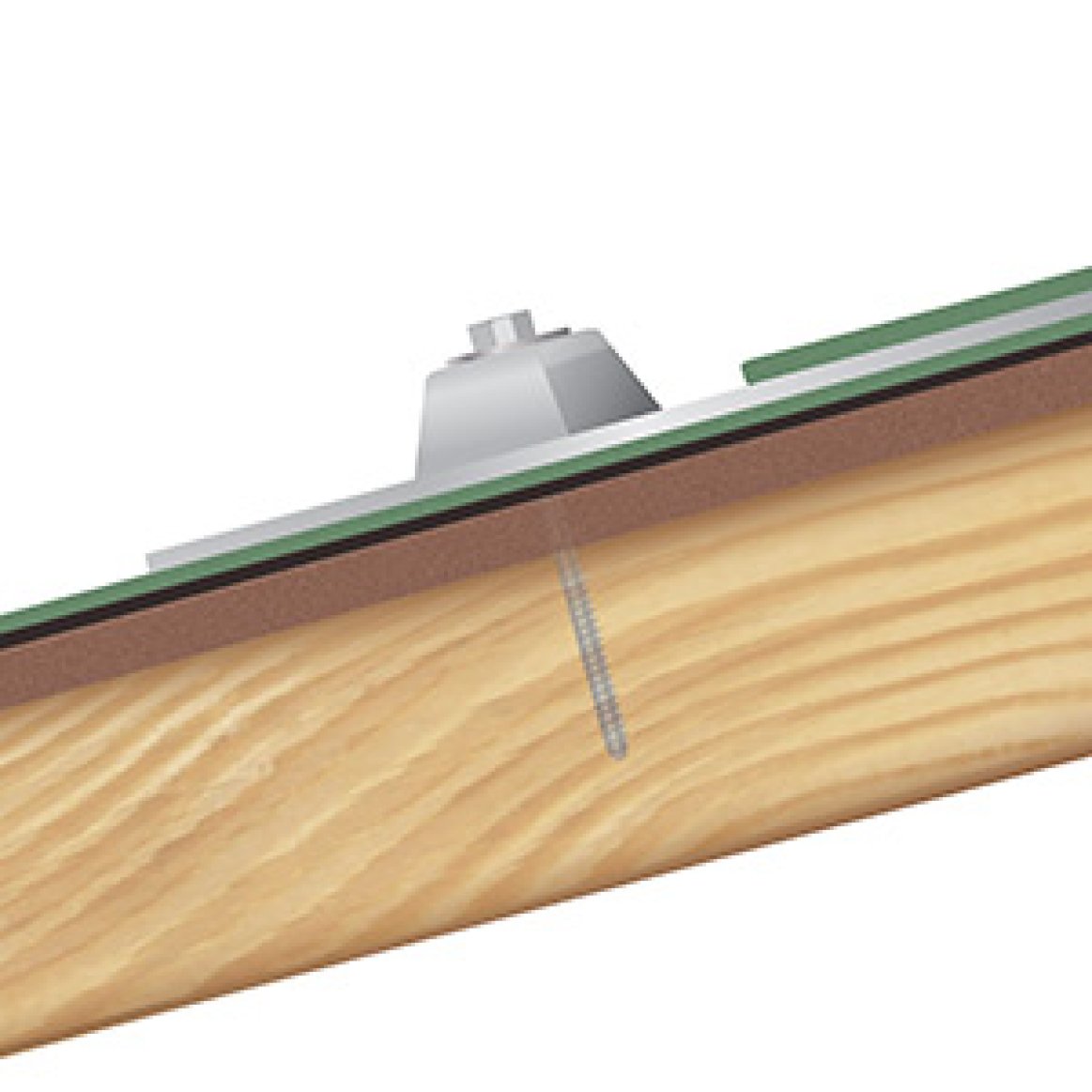
Protect your roof from water intrusion.
Solar modules are designed to last decades, while our roofing may not be. One of the earliest racking installation methods was to simply apply “dope” or sealant to the lag screw and base of the attachment. This, however, is not a reliable method for sealing attachments and preventing water intrusion into the roof space.
Over time, from naturally occurring thermal & wind exposure, expansion and contraction of the attachment as well as to the sealant can create an opening through which water could pass. While this may take years to become realized, over the lifetime of the system these potential hazards become a real concern. Consider that there are several dozen attachments in a typical installation, that means you have that many penetrations in the roof with the potential for very costly water damage if proper methods for weatherproofing are not used.
Instead of taking a gamble, consider installing roof flashings for each attachment point. As a homeowner or installer it is a wise investment to make.
Quick Mount offers many roof flashings that can be used for most roof types and often do not need to be removed when it comes time to replace the roofing material.
Asphalt shingle roof options to consider are the Classic Comp or the QBase which allows the racking to be elevated off the roof to allow better air circulation under the arrays.
Suppose you have a tile roof. You could use the Universal Tile mount which is great for both barrel and flat tile. Or you could use the tile hook for a more flush mount look.
These flashings cover most of the roof types that you’ll encounter, but Quick Mount does have flashings for shake, slate and membrane roofs as well.
Remember, flashings are like insurance for your roof and can save from costly repairs due to damage.